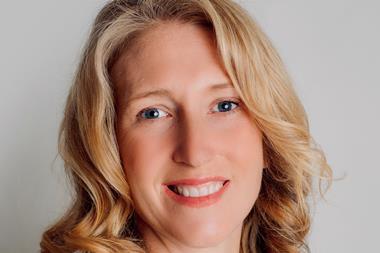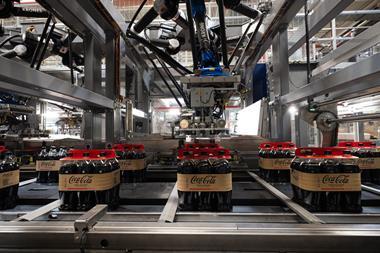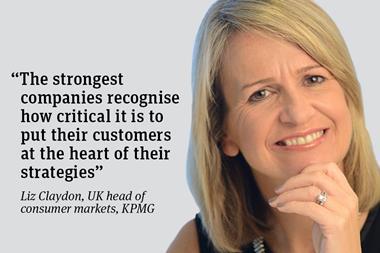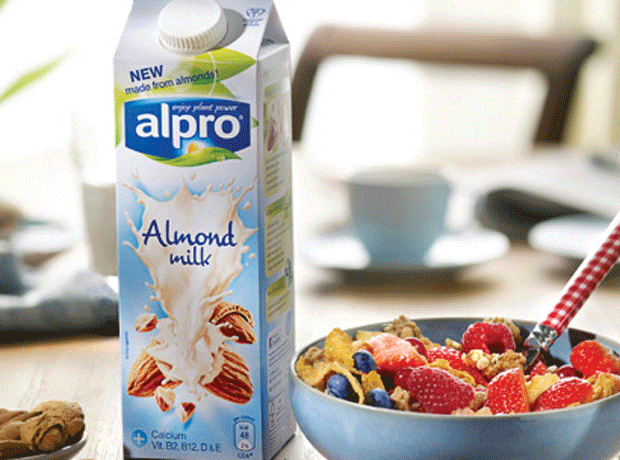"Don't focus so much on acquisition of new customers - keep the ones you have. If they're happy, they'll soon spread the word"
Tucking into a typically large American breakfast at Safeway's US head office in Pleasanton, in the bay area of San Francisco, Gary Sargeant, chief operating officer of Safeway.com, attacks the subject of home shopping with almost the same amount of gusto.
Currently on loan from Tesco.com to Safeway.com, where he is helping to improve its online service, his strategy is simple: pay attention to range; make sure the ordering process is super-efficient; deliver what has been ordered; deliver on time; and provide superior customer service
But has he got it right?
With a new president, Mitchell Rhodes, formerly vice president of marketing for Gap's online division, at the helm, the company has set itself the tough target of achieving $1bn in annual sales within five to six years representing about 20% of US online grocery sales.
It is a tall order. Just consider the list of casualties. Remember Webvan, which got the customer service side spot-on, but managed to wade through nearly $1bn of backers' money within two years by spending too much on automated warehousing facilities the internet bubble burst did the rest.
Then there was Peapod (on the East coast), saved from a similar fate in 2001 only by the intervention of Ahold. Even then its operating losses were reported to be $7.4m for the third quarter of 2002. And what about FreshDirect, which claims to have cracked the problem with a model that addresses the consumer's increasing desire for fresh food at a discount price, but is yet to be tested, having launched only in September?
Sargeant, who was involved in the initial stages of Tesco's Internet Superstore, now called Tesco.com, launched in February 1997, insists Safeway won't be the next on the list. Indeed, he says, strip out the costs of the new HQ and it is already in profit.
One of the reasons it is succeeding where others have failed is that it has worked to get the range right. "It's crucial to have the right products for the catchment," he explains.
At Safeway.com, when a customer enters the zip code they are instantly assigned to a store and linked direct to the store's stock system of up to 40,000 product lines.
In the past, replicating the shopping experience online was overlooked in the rush for online presence. But, says Sargeant: "You need to offer customers the same experience online, as in-store."
The team therefore worked to ensure that when the customer uses the search engine, it takes them to the right products and that when they order, they get the right product delivered.
Then there is Real Time Favourites' a categorised list of up to 300 of the customer's personal favourites taken direct from the loyalty database of Safeway Club Card or Vons.com (Safeway.com brand in Southern California). Also, registration for new customers is now one page instead of three. "We're bringing down the barriers and also working on ordering via mobile and PDA," says Sargeant.
Impressively, 98% of orders are completed without substitutions, according to customer research. "Some things are good for customer service, but bad for business," explains Sargeant. "We need to find a balance."
Many online shopping services fail because they don't listen to their customers. Safeway personal shoppers, who tend to be more mature and experienced than their UK counterparts, are encouraged to find out what their customers want and preferences are highlighted on the notice board.
In February, Safeway.com embarked on a major marketing push initially centred on San Francisco and involving TV, radio, direct mail & e-mail coupons.
Sargeant is unconvinced by strategies that do not focus intensely on the existing customer base. "The biggest tool to retain and recruit is e-mail.
"The key is to make it relevant. If the customer has a lot of respect for the brand they'll open it and, if it contains something valuable, then you've won at the first hurdle."
The e-mail then channels the customer direct to the offer on the site so they can continue to add to the basket and subscribe, if they haven't done so already.
"Before, they had to sign up before they could get anywhere near the shelves."
The team also realised that the Safeway target customer profile was a neat fit with football team Cyber Rays' fan base. So, in partnership, the players have started to make appearances at the pick-stores where they hand out offers.
The site's success does not mean mistakes have not been made. Sometimes marketing strategies have had to be tweaked. Safeway.com initially found redemption rates for coupons such as $10 off first delivery were low.
The team realised that it was because coupons had to be handed to the driver who delivered the goods, something that shoppers found offputtingly slow. So it introduced electronic codes to input at point of purchase and redemption rates immediately increased 10-fold.
Marketing director Dave Stewart says: "We've ramped up a little heavier for this marketing push the TV campaign launched in mid-February is a first for us.
"In the past we tended to just tag on the Safeway slot, but now we have our own 30-second slot."
The response has been so good they're about to run TV in other markets too.
Now, the service that began as a catalogue-based home shopping service for the housebound has evolved to become what many consider as the leading online grocery player on either side of the Pond.
Nevertheless, says Sargeant, there is no need for an explosive roll-out. "Here we demonstrate it works before rolling out. People are trying to make it a science, when really it is only retailing."
{{ANALYSIS }}
Tucking into a typically large American breakfast at Safeway's US head office in Pleasanton, in the bay area of San Francisco, Gary Sargeant, chief operating officer of Safeway.com, attacks the subject of home shopping with almost the same amount of gusto.
Currently on loan from Tesco.com to Safeway.com, where he is helping to improve its online service, his strategy is simple: pay attention to range; make sure the ordering process is super-efficient; deliver what has been ordered; deliver on time; and provide superior customer service
But has he got it right?
With a new president, Mitchell Rhodes, formerly vice president of marketing for Gap's online division, at the helm, the company has set itself the tough target of achieving $1bn in annual sales within five to six years representing about 20% of US online grocery sales.
It is a tall order. Just consider the list of casualties. Remember Webvan, which got the customer service side spot-on, but managed to wade through nearly $1bn of backers' money within two years by spending too much on automated warehousing facilities the internet bubble burst did the rest.
Then there was Peapod (on the East coast), saved from a similar fate in 2001 only by the intervention of Ahold. Even then its operating losses were reported to be $7.4m for the third quarter of 2002. And what about FreshDirect, which claims to have cracked the problem with a model that addresses the consumer's increasing desire for fresh food at a discount price, but is yet to be tested, having launched only in September?
Sargeant, who was involved in the initial stages of Tesco's Internet Superstore, now called Tesco.com, launched in February 1997, insists Safeway won't be the next on the list. Indeed, he says, strip out the costs of the new HQ and it is already in profit.
One of the reasons it is succeeding where others have failed is that it has worked to get the range right. "It's crucial to have the right products for the catchment," he explains.
At Safeway.com, when a customer enters the zip code they are instantly assigned to a store and linked direct to the store's stock system of up to 40,000 product lines.
In the past, replicating the shopping experience online was overlooked in the rush for online presence. But, says Sargeant: "You need to offer customers the same experience online, as in-store."
The team therefore worked to ensure that when the customer uses the search engine, it takes them to the right products and that when they order, they get the right product delivered.
Then there is Real Time Favourites' a categorised list of up to 300 of the customer's personal favourites taken direct from the loyalty database of Safeway Club Card or Vons.com (Safeway.com brand in Southern California). Also, registration for new customers is now one page instead of three. "We're bringing down the barriers and also working on ordering via mobile and PDA," says Sargeant.
Impressively, 98% of orders are completed without substitutions, according to customer research. "Some things are good for customer service, but bad for business," explains Sargeant. "We need to find a balance."
Many online shopping services fail because they don't listen to their customers. Safeway personal shoppers, who tend to be more mature and experienced than their UK counterparts, are encouraged to find out what their customers want and preferences are highlighted on the notice board.
In February, Safeway.com embarked on a major marketing push initially centred on San Francisco and involving TV, radio, direct mail & e-mail coupons.
Sargeant is unconvinced by strategies that do not focus intensely on the existing customer base. "The biggest tool to retain and recruit is e-mail.
"The key is to make it relevant. If the customer has a lot of respect for the brand they'll open it and, if it contains something valuable, then you've won at the first hurdle."
The e-mail then channels the customer direct to the offer on the site so they can continue to add to the basket and subscribe, if they haven't done so already.
"Before, they had to sign up before they could get anywhere near the shelves."
The team also realised that the Safeway target customer profile was a neat fit with football team Cyber Rays' fan base. So, in partnership, the players have started to make appearances at the pick-stores where they hand out offers.
The site's success does not mean mistakes have not been made. Sometimes marketing strategies have had to be tweaked. Safeway.com initially found redemption rates for coupons such as $10 off first delivery were low.
The team realised that it was because coupons had to be handed to the driver who delivered the goods, something that shoppers found offputtingly slow. So it introduced electronic codes to input at point of purchase and redemption rates immediately increased 10-fold.
Marketing director Dave Stewart says: "We've ramped up a little heavier for this marketing push the TV campaign launched in mid-February is a first for us.
"In the past we tended to just tag on the Safeway slot, but now we have our own 30-second slot."
The response has been so good they're about to run TV in other markets too.
Now, the service that began as a catalogue-based home shopping service for the housebound has evolved to become what many consider as the leading online grocery player on either side of the Pond.
Nevertheless, says Sargeant, there is no need for an explosive roll-out. "Here we demonstrate it works before rolling out. People are trying to make it a science, when really it is only retailing."
{{ANALYSIS }}














No comments yet